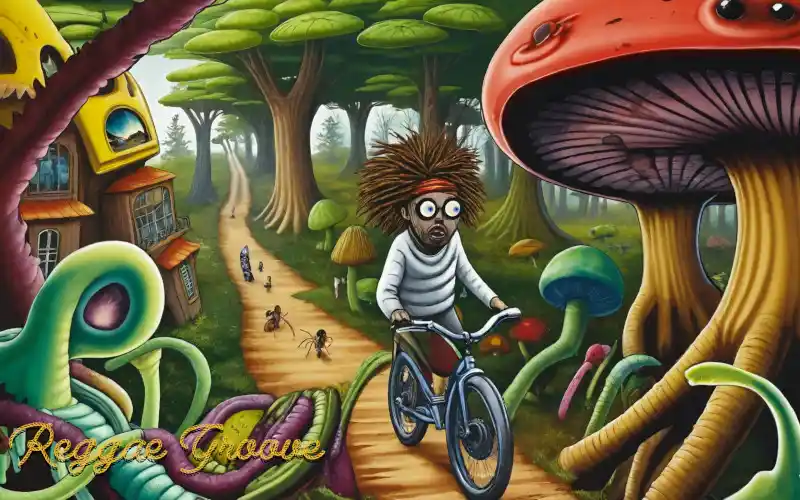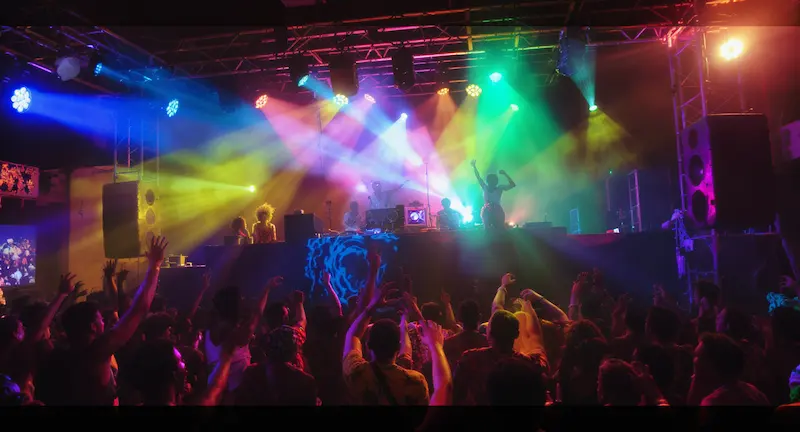
The Evolution of Reggae Styles
To properly explain reggae genres, you must understand that Reggae music is more than a sound—it’s a cultural movement that tells the story of Jamaica’s social struggles, spiritual awakenings, and vibrant rhythms.
What began as local street music in Kingston grew into one of the world’s most influential music genres.
Over the decades, reggae musicians shaped ska, rocksteady, roots reggae, dub, and dancehall, each bringing new rhythms, stories, and energy to the global stage.In this in-depth guide, we’ll explore the reggae music genre, tracing its journey from the upbeat ska grooves of the late 1950s to the digital dancehall beats dominating modern Jamaican reggae music. Along the way, we’ll meet iconic reggae artists, see how sound system culture shaped the scene, and understand how each style reflects the voice of the people.
Jamaica’s Musical Roots: The Birthplace of Reggae
Before reggae music exploded onto the world stage, Jamaica had a rich tapestry of rhythms blending African traditions, European influences, and American jazz and rhythm & blues. Three major factors influenced the development of Jamaican reggae music in the 1950s:
- Mento – a type of folk music from Jamaica that combines European instruments with African storytelling and drumming.
- Jazz & R&B – Imported from the U.S. via migrant laborers and radio waves, delivering new melodies and upbeat rhythms.
- Sound System Culture – Mobile DJs like Coxsone Dodd and Duke Reid played imported R&B at street dances, sparking a musical revolution.
These influences gave birth to ska, Jamaica’s first true pop style.
Ska: The Upbeat Beginnings of Reggae Music
Ska initially emerged in the late 1950s, fusing Caribbean mento and calypso with American R&B. It was impossible to avoid the dance feeling created by the combination of the odd rhythm of Skas, skank guitar, and lively horn sections. Ska, which was the music during Jamaica’s 1962 independence, brought joy and hope to the nation.
Defining Ska’s Sound
- Offbeat bassline highlights the rhythm.
- Horn sections with trumpets, trombones, and saxophones
- Fast tempo that fueled lively dance parties
- Sound systems blasting the latest records, turning DJs into cultural icons
Iconic Ska Artists
- The Skatalites – Jamaica’s legendary ska band, with hits like Guns of Navarone
- Prince Buster – Credited with creating the rude boy anthems.
- Desmond Dekker – Brought ska to UK audiences with Israelites
While ska became internationally popular, Jamaica’s scorching summers slowed the pace, giving rise to a new, smoother style—rocksteady.
Rocksteady: Slower Tempos, Soulful Lyrics
By 1966, rocksteady, which was hipper and more soulful, had replaced the fast-paced beats of ska. With deeper basslines, vocal harmonies, and slower tempos, rocksteady reflected both the romantic and socially conscious moods of the era.
Why Rocksteady Changed the Game
- Prominent basslines became the backbone of the music
- Electric organs supplanted pianos, influencing the development of reggae music.
- Horns stepped back, giving space for vocal harmonies
- Lyrics shifted from independence celebrations to love songs and social commentary
Rocksteady Legends
- “Godfather of Rocksteady” Alton Ellis is known for songs like “Girl I’ve Got a Date.”
- The Paragons – On the Beach remains a timeless classic
- The Heptones – The next chapter of reggae was molded by the Heptones’ soulful harmonies.
Even though they were barely there for two years, rocksteady laid the groundwork for reggae music.

Reggae Emerges: A New Musical Identity
The transition from rocksteady to reggae was officially made in 1968 with the publication of Do the Reggay by Toots and the Maytals. The pace was considerably slowed down with the introduction of a one-drop beat and deep, meditative basslines in this new genre of reggae music..
Reggae’s Key Musical Elements
- One-drop drumming, which leaves the first beat empty, produces a captivating groove.
- Skank Guitar – On beats two and four, there are brief, scratchy guitar chops called “skank.”
- Nyabinghi drumming – A blend of African spiritual rhythms and chanting American gospel music. (a Rastafarian practice to elevate spiritual awareness)
- Social injustice, and poverty are the main topics of reggae songs.
This gave rise to roots reggae, a genre strongly linked to the Rastafari movement and its spiritual messages of liberation.
Roots Reggae: Spirituality and Protest
The 1970s saw the rise of roots reggae, the subgenre most associated with Rastafarian beliefs, African pride, and calls for justice. As the lyrics became more spiritually and politically charged, reggae became the voice of Jamaica’s underprivileged people.
Themes of Roots Reggae
- Resistance to Babylon (oppressive systems)
- Hope for Zion (Africa, the promised land)
- Calls for unity, peace, and social justice
- Celebration of African identity
Roots Reggae Icons
- Bob Marley – The world-renowned reggae artist known for classic songs like “One Love” and “Redeeming Song.”
- Peter Tosh – His fervent advocacy for equality is evident in songs such as Equal Rights.
- Burning Spear – Spiritual chants and meditative rhythms
Roots reggae became well-known throughout the world and impacted not only reggae artists but also the hip-hop, punk, and world music scenes.
Dub: The Studio Revolution
In the late 1960s, Jamaican producers pioneered dub music, creating instrumental versions of reggae tracks with echo, reverb, and heavy bass. Dub wasn’t just a genre—it was a studio experiment that shaped the future of remix culture.
Dub Pioneers
- King Tubby – Known as the “father of dub,” he turned mixing into an art form
- Lee “Scratch” Perry – His Black Ark Studio produced mystical, otherworldly sounds
Dub’s innovations influenced modern electronic music, from drum & bass to techno.

Dancehall: From Sound Systems to Digital Beats
Dancehall, a high-energy genre centered on DJs (sometimes known as “toasters”) conversing over simple instrumental music, emerged from reggae once more by the late 1970s.
Dancehall’s Key Phases
- Rub-a-dub era – When sound systems were controlled by the emerging DJ culture of major Disc Jocks like Yellowman and Eek-A-Mouse.
- Digital revolution – Under Me Sleng Teng, released in 1985, featured entirely electronic beats.
- Global fusion – Dancehall was popularized by pop performers like Sean Paul who brought the new sound to the wider pop music audience.
Dancehall’s fast beats, catchy hooks, and streetwise lyrics made it the heartbeat of Jamaican nightlife and a major influence on reggaeton, hip-hop, and Afrobeats.
Reggae’s Global Impact
Reggae influenced music scenes and movements all over the world, from Kingston to London, New York, and Tokyo.
- UK Reggae Bands – Steel Pulse, UB40, and Aswad were the ones that brought reggae to the British charts.
- Africa – Lucky Dube and Alpha Blondy used reggae to fight apartheid and corruption
- Latin America – Panama and Puerto Rico fused reggae with Latin rhythms to create reggaeton
- Japan & Europe – thriving dub and roots reggae scenes continue today
Reggae’s message of love, solidarity, and defiance reached a globe prepared to confront injustice. The small movement soon spread far beyond the streets and clubs of Jamaica to become an international phenomenon.

Iconic Reggae Musicians Who Shaped the Genre
No discussion of reggae music history is complete without mentioning the reggae musicians who made it possible:
- The Skatalites – Ska pioneers
- Toots & The Maytals – Bridged rocksteady and reggae
- Bob Marley & The Wailers – The global face of roots reggae
- Lee “Scratch” Perry – Dub innovator
- Dennis Brown & Gregory Isaacs – Lovers rock icons
Yellowman & Shabba Ranks – Dancehall trendsetters

Frequently Asked Questions
What are the main types of reggae music?
Rocksteady, dancehall, dub, roots reggae, and ska are the main styles that impacted reggae music.
Who are the most famous reggae musicians?
Among the most recognizable are Jimmy Cliff, Burning Spear, Toots Hibbert, Bob Marley, and Peter Tosh.
What makes reggae music unique?
Its offbeat rhythm, deep basslines, and lyrics about love, resistance, and spirituality set it apart.
How did reggae influence global music?
Reggae shaped hip-hop, punk, reggaeton, Afrobeats, and even modern electronic music through dub production techniques.

Conclusion: Reggae’s Living Legacy
From ska’s joyful horns to dancehall’s digital riddims, reggae has evolved while staying true to its Jamaican roots. It is a beat that connects people worldwide, a cultural force, and a voice for the voiceless. It is more than just a type of music.
Whether you’re grooving to the classic beats of Bob Marley, vibing to dub echoes, or dancing to dancehall, reggae’s heartbeat continues to inspire freedom, unity, and love across generations.

